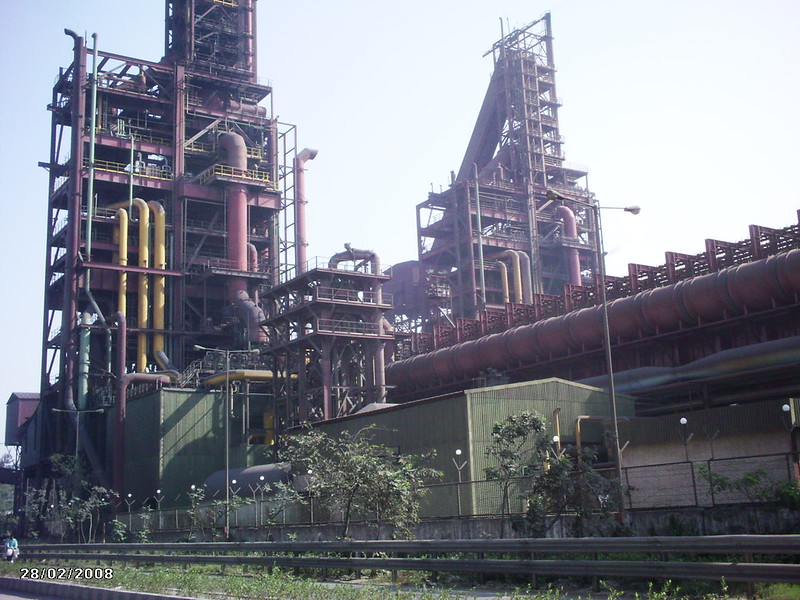Industry Ranks November 2019

Photo Credit: Kailash Giri || I used to live near a crude oil refinery. Got soot on my car, but it provided a lot of jobs for people in the area.

Data from Value Line, Calculations by me
Remember when I used to do posts like these? The last full time was May 2014. I lost access to the data, and eventually I gave up.
Recently, I got access to the data back, and I rebuilt the model. I’ll do a post like this every now and then.
My main industry model is illustrated in the graphic. Green industries are cold. Red industries are hot. If you like to play momentum, look at the red zone, and ask the question, “Where are trends under-discounted?” Price momentum tends to persist, but look for areas where it might be even better in the near term.
If you are a value player, look at the green zone, and ask where trends are over-discounted. Yes, things are bad, but are they all that bad? Perhaps the is room for mean reversion.
My candidates from both categories are in the column labeled “Dig through.”
You might notice that I have no industries from the red zone. That is because the market is so high. I only want to play in cold industries. They won’t get so badly hit in a decline, and they might have some positive surprises.
If you use any of this, choose what you use off of your own trading style. If you trade frequently, stay in the red zone. Trading infrequently, play in the green zone — don’t look for momentum, look for mean reversion. I generally play in the green zone because I hold stocks for 3 years on average.
Whatever you do, be consistent in your methods regarding momentum/mean-reversion, and only change methods if your current method is working well.
Huh? Why change if things are working well? I’m not saying to change if things are working well. I’m saying don’t change if things are working badly. Price momentum and mean-reversion are cyclical, and we tend to make changes at the worst possible moments, just before the pattern changes. Maximum pain drives changes for most people, which is why average investors don’t make much money.
Maximum pleasure when things are going right leaves investors fat, dumb, and happy — no one thinks of changing then. This is why a disciplined approach that forces changes on a portfolio is useful, as I do 3-4 times a year. It forces me to be bloodless and sell stocks with less potential for those with more potential over the next 1-5 years.
I like some technology stocks here, some industrials, some retail stocks, particularly those that are strongly capitalized.
I’m looking for undervalued industries. I’m not saying that there is always a bull market out there, and I will find it for you. But there are places that are relatively better, and I have done relatively well in finding them.
At present, I am trying to be defensive. I don’t have a lot of faith in the market as a whole, so I am biased toward the green zone, looking for mean-reversion, rather than momentum persisting.
The Red Zone has tech, financials, communications, and areas geared to home building and improvement. I don’t own much in the way of financials, aside from a few beaten-up life insurers. Really, I don’t own much in the red zone at all.
In the green zone, I picked almost all of the industries. I don’t like retail much, and I am not a fan of E&P here. That still leaves me with a bunch of cyclicals in industries that have lagged the market, and a melange of other things.
The questions is: how well will the economy continue to do? This recovery is pretty long in the tooth. If it doesn’t do well, how much protection does a low valuation carry?
What would the model suggest? Ah, there I have something for you, and so long as Value Line does not object, I will provide that for you. I looked for companies in the industries listed, but in the top 4 of 9 balance sheet safety categories, and with returns estimated over 12%/year over the next 3-5 years. The latter category does the value/growth tradeoff automatically. I don’t care if returns come from mean reversion or growth.
Also, I wanted firms selling at a low-ish forward EV/EBITDA multiple (in relative terms to each industry), and having grown book value after dividends are reinvested over the past seven years.
But anyway, as a bonus here are the names that are candidates for purchase given this screen. Remember, this is a launching pad for due diligence, not hot names to buy.

Data is a mix from AAII Stock Investor, Value Line and Sentieo || Calculations are mine
Disclosure:
Clients and I own shares in DLX, SLB, GPC & MGA.



